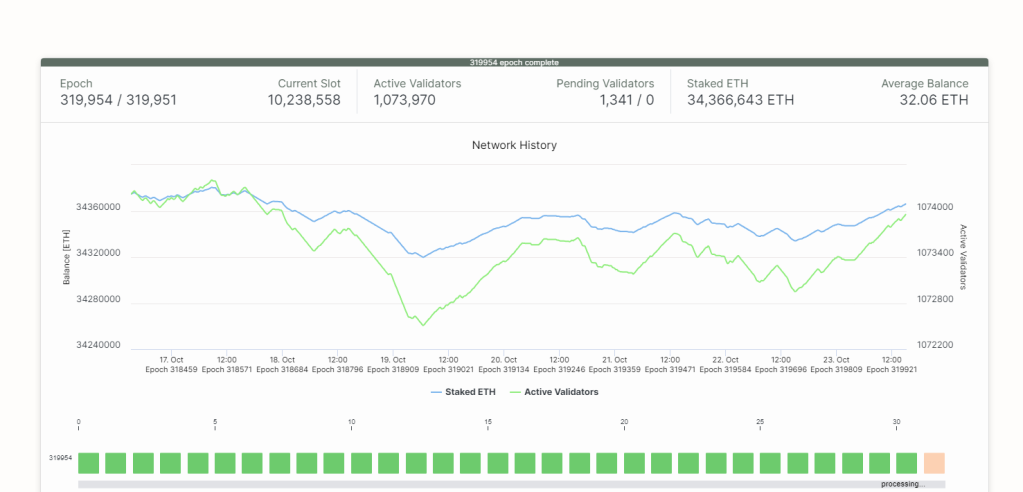After years of ongoing development and countless enhancements, Ethereum has made significant strides as the premier global platform for smart contracts. This evolution marks a substantial growth phase for Ethereum, albeit in a manner that some enthusiasts of full decentralization may find somewhat unorthodox. Indeed, the quest to cater to an expanding user base has ushered in an era where the reliance on off-chain solutions, chiefly through roll-up techniques, has become more pronounced. Such measures aim to augment transaction processing capabilities, thereby alleviating the burden on the principal network, or mainnet.
The Surge of Ethereum Layer-2 Solutions
This innovation has triggered a surge in the popularity and adoption of layer-2 platforms. An analysis by L2Beat reveals that these off-chain solutions collectively manage assets exceeding $37 billion in value. Among these, Arbitrum stands out as the frontrunner, overseeing upwards of $13 billion. This burgeoning ecosystem points to a vibrant expansion phase within the Ethereum landscape.
Nevertheless, amidst this layer-2 proliferation, the core issue of decentralization remains a topic of debate. Platforms like Arbitrum and Base are rapidly becoming central cogs in the Ethereum machinery, yet their journey towards becoming fully decentralized is far from complete.
For instance, some developers have not yet succeeded in implementing a decentralized fault-proof system or a sequencer. These components are crucial for the integrity of transactions within the layer-2 framework, mirroring the reliability found in transactions on the mainnet.
Without a robust fault-proof system, transactions heading for the sequencer could be exposed to vulnerabilities. Once sequenced, these transactions are batched and then authenticated on the mainnet, incurring a fee paid to Ethereum validators during the settlement process.
A New Paradigm: Buying Decentralization
A significant shift has been observed recently, with layer-2 protocol fees dipping substantially following the activation of technological enhancements. This situation poses a dilemma, potentially reducing the incentive for validators amid an expanding layer-2 domain. Token Terminal posits that a new model may emerge, whereby layer-2 solutions might need to outsource or “buy” decentralization directly from mainnet validators—suggesting a pivotal change in the dynamics of the Ethereum ecosystem.
This strategic shift is underpinned by the fact that, with over a million validators currently safeguarding the blockchain, as per data from Beaconcha.in, there exists a rich plethora of potential partners. Such partnerships could offer a practical path toward achieving the decentralization so crucial to the ethos of blockchain technology.

Token Terminal’s analysis suggests that although layer-2 platforms could attempt to independently build a decentralized network of validators, the resource intensity of such undertakings makes buying decentralization a more viable and expedient solution. Opting for this route means these platforms could negotiate favorable terms, enhancing revenue for Ethereum validators while simultaneously bolstering the demand for decentralized solutions in the layer-2 space.
For a dynamic exploration of developments in the decentralized finance ecosystem, visit DeFi Daily News to stay abreast of the latest trends and insights.
Conclusion: An Entertaining Voyage into Ethereum’s Expanding Universe
The journey of Ethereum’s evolution is akin to an exhilarating roller coaster ride through the realms of technology and finance. The ascendancy of layer-2 platforms underscores a vibrant chapter in Ethereum’s story, marked by innovation, challenges, and a quest for balance between scalability and decentralization. As we ponder the possibilities, the notion of buying decentralization emerges as a fascinating plot twist, potentially heralding a new era of collaboration across the blockchain domain. Amidst these developments, one thing remains clear: the Ethereum ecosystem, with its myriad of characters, platforms, and technologies, offers a compelling saga that continues to captivate audiences worldwide. So, buckle up and enjoy the ride, for Ethereum’s story is far from over—it’s just getting started.



















